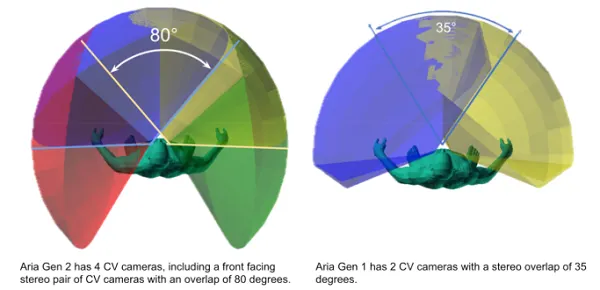Meta has provided some more insight into its coming AR glasses, including detailed notes on its latest model, as it works towards the eventual retail launch of its AR device.
Meta previewed its second-generation “Aria” glasses earlier this year, with an overview of the advancing tech elements that’ll be integrated into the device.
And now, it’s shared more insight into the specifics, and how it’s looking to ensure its AR glasses are lightweight, fashionable and affordable when launched.
As you can see in this overview, Meta’s AR glasses continue to evolve, with more advanced elements being packed into the device, in order to facilitate practical, valuable AR experiences.
Though practical utility remains the core focus.
As explained by Meta:
“Aria Gen 2 boasts superior wearability, characterized by enhanced comfort and fit, while accommodating a wider range of face morphologies and a rich sensor suite for research. The glasses maintain a lightweight design (weighing in at 74 – 76g, depending on size) and now include folding arms for easier storage and transport for everyday use. To ensure each wearer has an optimal physical and functional fit, we’ve introduced eight size variations of the device, accounting for a number of human factors including head breadth and nose bridge variation.”
Yes, folding arms is actually an advance at this stage, because of the complexity of the systems being built into the device.
Meta says that Aria Version 2 has improved camera sensors, so that it can operate in variable light conditions, as well as an expanded field of view over the initial Aria model.

Aria Gen 2 also includes a contact microphone embedded in the nosepad of the device, which enhances audio capture in noisy environments, while it also includes eye and hand tracking elements to enhance response.
It’s interesting to see how Meta’s AR device is evolving, which it considers to be the future of digital interactions. Indeed, Meta CEO Mark Zuckerberg has said that functional connected glasses are a “holy grail” device, which will one day replace smartphones as our key interactive system.
So while it’s become pretty normal to see people seemingly talking to themselves as they use their phones in hands-free mode in public, the next stage may see people randomly waving their hands around before their faces and poking at the air, as they interact with systems that only they can see.
Which will be weird, but will normalize quickly, and given the capacity for these devices to provide all new, immersive experiences, I can see why Zuck sees this as the next logical evolution of connectivity.
Meta says that it will open up applications from external developers who want to work with Aria Gen 2 later this year, which is the next step towards a planned consumer launch in 2027.
You can read more about Meta’s Aria Generation 2 device here.



